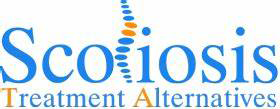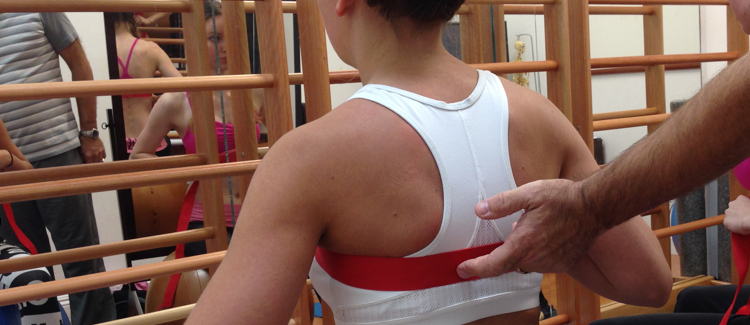A recent study done on the efficacy of the Schroth Method exercises in Canada called Schroth Physiotherapeutic Scoliosis-Specific Exercises Added to the Standard of Care Lead to Better Cobb Angle Outcomes in Adolescents with Idiopathic Scoliosis showed that scoliosis curves were reduced overall with patients that did the addition of these exercises compared to a control group that underwent standard physical therapy treatment.
Sanja Schreiber a registered kinesiologist and therapist originally from Serbia had been using corrective gymnastics, pilates and yoga to treat patients with scoliosis until she came across scoliosis-specific exercises, called Schroth, and saw tremendous results.
When she came to Canada to get her PhD in 2009 she decided to put Schroth to the test in a randomized control trial of 50 patients aged 10 to 18 with curves of 10 degrees to 45 degrees. The results were published in the peer reviewed journal PLOS one. In the study they defined success with scoliosis treatment as keeping the curve stable or improving the curves.
Conclusions Of Study On Benefits Of Schroth Method Exercises
In the Schroth group 88% were successful in treating their scoliosis compared to 60% in the control group.
Click Here to read the full article.


My daughter was diagnosed with scoliosis at age 6, with a 23 degree thoracic curve. By the time she was 11, the curve had progressed to 29 degrees. We decided to go against our orthopedic surgeon’s wishes (place her in a hard brace 20 hours a day) and started going to our chiropractor once a week for treatment, place her in a SpineCor flexible brace, and go to a PT for Schroth therapy. She’s grown over five inches in the past 15 months and her curvature is down to 22 degrees. A hard brace is NOT the answer! Look for alternatives!!
I went to a clinic and was told my scoliosis wasn’t causing my pain. It’s due to my cervical dystonia.
I was told we can’t help you.
It’s impossible to say what’s causing your pain without knowing more detail. Often doctors tell patients that scoliosis does not cause pain. Many patients who have scoliosis and pain strongly disagree.
People with scoliosis will often have no pain as an adolescent but as the scoliosis progresses overtime the imbalance often causes distortions in the spine and trunk that does cause pain. So while it may not start at the time of the onset of scoliosis, it’s progression and effects on the body certainly do cause pain in many cases.
In my opinion, a doctor telling a patient that their scoliosis isn’t causing their pain is doing them a disservice. It not only discounts what the patient is telling them about their health, it undermines the patients quest in getting help. Their pain is real and so this their scoliosis and while there may not necessarily be a direct linear connection between the two, they are related. They may then point to other conditions that could cause their pain as the explanation for the cause of it, which could keep the patient from getting the right treatment.
Now, I’m not saying that’s the case in your situation, I’m just saying that it does happen.
Another related comment that I hear patients say their doctor told them was that there is nothing that can be done for it as an adult. That may be because Conventional Medicine does not have any real good solutions for treating scoliosis in adults, but that doesn’t mean there aren’t any good alternative treatments. In fact there are good options for treatment of adult scoliosis that is causing pain.
In your case I would recommend getting a second opinion. If you’d like for our doctors to review your case, please give us a call to schedule a Free Scoliosis Phone Consult.
I’m 49 in a couple of months. I have scoliosis. Don’t know to what degree, but you can definitely see the S in my spine on an x-ray. My ribs are twisted at my sternum. Sometimes the pain between my shoulder blades feels like a knife. Sometimes I get a muscle spasm so hard, it takes my breath away. Can’t inhale or exhale. Can’t move a muscle. I’m slowly losing height.
I was 11 and hanging by my legs on parallel bars. I slipped, and fell with my head turned to the right. I definitely broke my collar bone. I also think I broke my growth plate on the right side of my mandible. Each side is a diff length, and partially dislocates, pops, clicks, etc.
I think this is what started my curvature. Back then, I only got treated for my broken clavicle.
Changes in posture while I stand at my job help. No more slack hips. No more slumped shoulders. I do the pelvic thrust, and slack knees. It eases my lower back pain.
Some days still suck tho.
Chiropractic has helped too.
Is it too late to reverse?